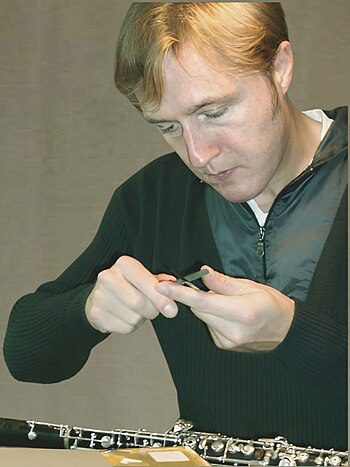Let it be known that I like band directors and that without mine long ago I would not be sitting here writing about what I know about the oboe.
He was (and probably still is) a wonderful man who encouraged me, taught me what he knew but then was humble enough to say that he could take me no further. He recommended a professional oboist in town so I could continue learning the things he could not teach me, and I am forever grateful.
So, you could say I have a great deal of respect for band directors.
I know they are teaching a lot of kids a lot of different instruments, and there is no way anybody can be an expert on all of them. I give them credit for trying!
But there's something that has been coming up a lot in my teaching and even when fielding reed questions that has been bothering me. And although I am sure band directors aren't the only ones to "blame," that's where I am starting to work towards a solution.
The problem seems to be in advising the young band oboists in the selection of oboe reeds. Now, many a band director has bought handmade oboe reeds from me, so there are exceptions.
But to the majority out there, do you know how much easier teaching the oboe would be if you handed out handmade oboe reeds instead of fibercane or even those awful profiled music-store reeds?
The reason is plain and simple.
These reeds do not encourage good habits and make the oboe difficult to play, more difficult than it ever needs to be.
The idea I keep hearing is that somehow, good reeds are reserved for good students... but that is completely wrong. A good, handmade oboe reed should be provided for every beginning oboist on their very first day of playing the oboe.
Talk to a professional oboist and see if they can work with you in making reeds that young students can handle, or consult a professional reedmaking company (yes, like MKL Reeds) that can work with these requests.
Although we need "labels" on reeds so that we all know what we are talking about, these labels are perhaps the least helpful part of all of this. Find a place that can make reeds for beginning students, and that should be pretty much all you need to say.
I am on my soapbox lately about all this "hard, medium hard, soft" stuff!! There is also this very large misconception out there that once a student has been playing for more than a year they need to "graduate" to a "harder" reed... and by the time they have been playing a while they are being handed these "hard" reeds they can't even play!
I just don't understand where this all came from, thinking that increased ability on the oboe somehow means you should make it harder for someone to actually play.
Now, it's not entirely the fault of a band director. And the situation is not exactly helped by machine-made reed manufacturers that are labeling their reeds in this way either.
Here's my take on it:
An oboist needs a reed he can play, NO EXCEPTIONS!!
Buy oboe reeds for your students that are handmade and are not classified in this way, unless you can talk to someone and explain what you need.
What a more advanced student needs in a reed is resistance, which is much different that hardness. So, stop handing them hard reeds once they pass the year mark, and especially when they seem like they are struggling.
Unless you can scrape these reeds down for them, they should not be encouraged. Better yet, get reeds from a professional oboist because these will make your job easier and it will make your students improve faster and probably enjoy playing a lot more.
I can't imagine how hard a job it is to be in your shoes, but think of the amazing start you can help give to each and every kid that chooses to play the oboe.
Oboist and entrepreneur Maryn Leister helps beginner, intermediate and professional oboists become happier oboe players. She is an owner of the oboe learning company MKL Reeds and publisher of the Reed Report and Oboe Success Tips Newsletters. Each newsletter is full of straightforward tips on becoming a better oboe player and on taking control of your oboe reeds. Get your free subscription to the Reed Report newsletter and start your own journey towards a more rewarding oboe future right away. Sign-Up now and get your FREE Oboe Reed Tips ! Article Source: EzineArticles |





